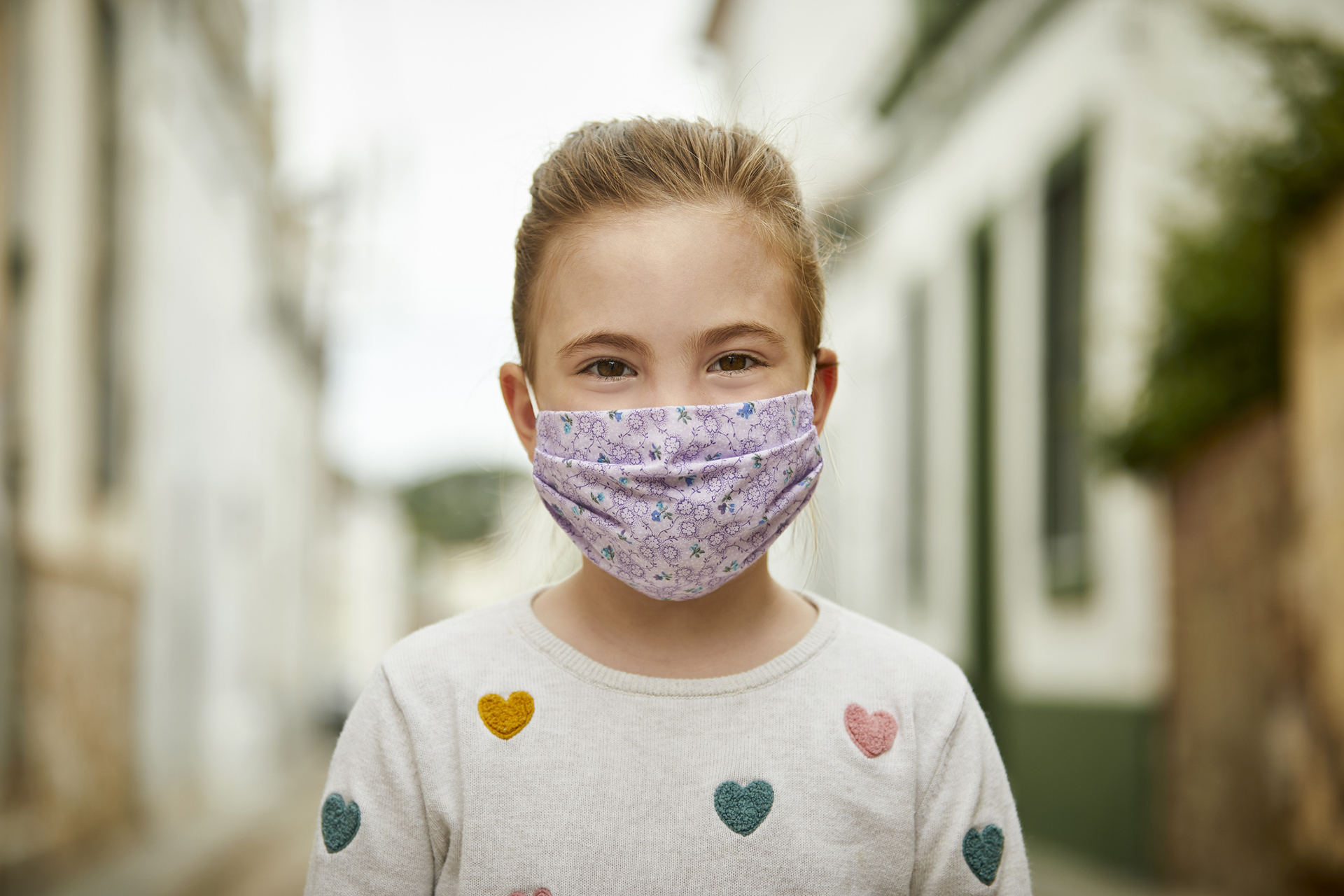Although children are less likely than adults to contract and become severely ill from COVID-19, they are still at risk of getting and spreading the virus. Wearing a face mask remains one of the most effective actions to protect against coronavirus. It’s recommended that all children 2 and older wear a mask over their nose, mouth, and chin whenever they’re outside the home.
Helping children wear masks, however, presents unique challenges. Angelica Ha, MD, a pediatrician and assistant physician in chief for Kaiser Permanente Roseville and Kaiser Permanente Sacramento pediatrics, shares strategies on how to effectively get kids of all ages to wear a mask.
Dr. Ha stresses that wearing a mask should always be combined with frequent hand washing, maintaining 6 feet of distance from others, limiting in-person hangouts, and disinfecting surfaces. She suggests following guidelines from the Centers for Disease Control and Prevention.
Toddlers (ages 2 – 4)
It’s difficult for toddlers to understand the importance of wearing a mask, so making it non-negotiable, similar to wearing a bike helmet, is necessary.
“It’s easier for younger kids to understand that wearing a mask is something they need to do,” said Dr. Ha, a mother of 2 children. “You can also explain that it protects against germs and helps keep other people healthy.”
Next up is fit. A correctly fitting mask prevents your child from fussing or wanting to take it off. Try a cloth mask with an adjustable nose bridge and ear straps, which allow for a tighter fit over the nose, mouth, and under the chin.
Engaging your little ones in choosing a mask by letting them pick their favorite color or pattern can also help inspire a positive attitude.
Elementary School Aged Children (ages 5 – 12)
Be a role model. When children see their parents and family members wearing masks, they will want to follow suit and begin to understand it’s the new normal. If your youngster is resisting, try positive reinforcement.
“You can tell them if they want to go to their favorite place or do a favorite activity, they need to wear a mask,” Dr. Ha said.
Teens
Teenagers tend to think they are invincible, explained Dr. Ha. They often don’t personally know someone who has gotten sick from COVID-19, so the pandemic may not seem dangerous.
“Get them to understand that they are part of a larger community,” she said. “Data has shown that teens want to do the right thing for their community.”
Encouraging your teenagers to research information about COVID-19 while educating them on how to identify reliable sources can also help them take preventive measures.
All Ages
Dr. Ha said the same protocols for adults regarding physical distancing in all environments should also be followed by children, regardless of age. That includes taking off masks only with immediate family at home or outside with the ability to maintain a 6-foot distance from others.
Parents should also practice preventive planning, such as avoiding situations where masks are needed for long periods of time or not bringing younger children along when running errands, if possible.
On a final note, remember to maintain open communication with your children about the pandemic and let them know everyone is adapting and learning during this unprecedented time. The most important thing is to put safety first to protect themselves and others.
To learn more about how to protect you and your family against COVID-19, visit kp.org.




